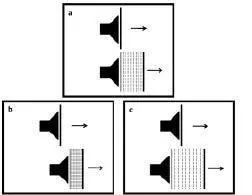Mark Changizi - Harnessed - How Language and Music Mimicked Nature and Transformed Ape to Man
Здесь есть возможность читать онлайн «Mark Changizi - Harnessed - How Language and Music Mimicked Nature and Transformed Ape to Man» весь текст электронной книги совершенно бесплатно (целиком полную версию без сокращений). В некоторых случаях можно слушать аудио, скачать через торрент в формате fb2 и присутствует краткое содержание. Год выпуска: 2011, Издательство: Perseus Books Group, Жанр: Старинная литература, на английском языке. Описание произведения, (предисловие) а так же отзывы посетителей доступны на портале библиотеки ЛибКат.
- Название:Harnessed: How Language and Music Mimicked Nature and Transformed Ape to Man
- Автор:
- Издательство:Perseus Books Group
- Жанр:
- Год:2011
- ISBN:нет данных
- Рейтинг книги:5 / 5. Голосов: 1
-
Избранное:Добавить в избранное
- Отзывы:
-
Ваша оценка:
- 100
- 1
- 2
- 3
- 4
- 5
Harnessed: How Language and Music Mimicked Nature and Transformed Ape to Man: краткое содержание, описание и аннотация
Предлагаем к чтению аннотацию, описание, краткое содержание или предисловие (зависит от того, что написал сам автор книги «Harnessed: How Language and Music Mimicked Nature and Transformed Ape to Man»). Если вы не нашли необходимую информацию о книге — напишите в комментариях, мы постараемся отыскать её.
Harnessed: How Language and Music Mimicked Nature and Transformed Ape to Man — читать онлайн бесплатно полную книгу (весь текст) целиком
Ниже представлен текст книги, разбитый по страницам. Система сохранения места последней прочитанной страницы, позволяет с удобством читать онлайн бесплатно книгу «Harnessed: How Language and Music Mimicked Nature and Transformed Ape to Man», без необходимости каждый раз заново искать на чём Вы остановились. Поставьте закладку, и сможете в любой момент перейти на страницу, на которой закончили чтение.
Интервал:
Закладка:
There is yet another reason why people are prone to give a spatial interpretation to melody’s “rising and falling” pitch, and that is that melody’s pitch tends to change in a continuous manner: it is more likely to move to a nearby pitch than to discontinuously “teleport” to a faraway pitch. This has been recognized since the early twentieth century, and in Sweet Anticipation Professor David Huron of Ohio State University summarizes the evidence for it. Isn’t this pitch continuity conducive to a spatial interpretation? Pitch continuity is at least consistent with a spatial interpretation. (But, then again, continuity is consistent with most possible physical parameters, including the direction of a mover.)
We see, then, that gravity, musical instruments, musical notation, and the pitch continuity of most melodies conspire to bias us to interpret musical pitch in a spatial manner (i.e., where pitch represents spatial position or distance). But like any good conspiracy, it gets people believing something false . Pitch is not spatial in the natural world. It doesn’t indicate distance or measure spatial position. How “high” or “low” a sound is doesn’t tell us how near or far away its source is. I will argue that pitch is not spatial in music, either. But then what is spatial in music? If music is about movement, it would be bizarre if it didn’t have the ability to tell your auditory brain where in space the mover is. As we will see later in this chapter, music does have the ability to tell us about spatial location—that’s the meaning of loudness.
But we’re not ready for that yet, for we must still decode the meaning of melodic pitch. My hypothesis is that hiding underneath those false spatial clues lies the true meaning of melodic pitch: the direction of the mover (relative to the listener’s position). It is that fundamental effect in physics, the Doppler effect, that transforms the directions of a mover into a range of pitches. In order to comprehend musical pitch, and the melody that pitches combine to make, we must learn what the Doppler effect is . We take that up next.
Doppler Dictionary
In the summer months, our neighborhood is regularly trawled by an ice cream truck, loudly blaring music to announce its arrival. When the kids hear the song, they’re up and running, asking for money. My strategy is to stall, suggesting, for example, that the truck only sells dog treats, or that it is that very ice cream truck that took away their older sister whom we never talk about. But soon they’re out the door, listening intently for it. “It’s through the woods behind the Johnsons’,” my daughter yells. “No, it’s at the park playground,” my son responds. As the ice cream truck navigates the maze of streets, the kids can hear that it is sometimes headed toward them, only to turn at a cross street, and the kids’ hearts drop. I try to allay their heartache by telling them they weren’t getting ice cream even if the truck had come, but then they perk up, hearing it headed this way yet again.
The moral of this story about my forlorn kids is not just how to be a good parent, but how kids can hear the comings and goings of ice cream trucks. There are a variety of cues they could be using for their ice cream–truck sense, but one of the best cues is the truck’s pitch , the entire envelope of pitches that modulates as it varies in direction relative to my kids’ location, due to the Doppler effect.
What exactly is the Doppler effect? To understand it, we must begin with a special speed: 768 miles per hour. That’s the speed of sound in the Earth’s atmosphere, a speed Superman must keep in mind because passing through that speed leads to a sonic boom, something sure to flatten the soufflé he baked for the Christmas party. We, on the other hand, move so slowly that we can carry soufflés with ever so slightly less fear. But even though the speed of sound is not something we need to worry about, it nevertheless has important consequences for our lives. In particular, the speed of sound is crucial for comprehending the Doppler effect, wherein moving objects have different pitches depending on their direction of movement relative to the listener.
Let’s imagine a much slower speed of sound: say, two meters per second. Now let’s suppose I stand still and clap 10 times in one second. What will you hear (supposing you also are standing still)? You will hear 10 claps in a second, the wave fronts of a 10 Hertz sound. It also helps to think about how the waves from the 10 claps are spread out over space. Because I’m pretending that the speed of sound is two meters per second, the first clap’s wave has moved two meters by the time the final clap occurs, and so the 10 claps are spread out over two meters of space. (See Figure 23a.)

Figure 23. (a)A stationary speaker is shown making 10 clap sounds in a second. The top indicates that the wave from the clap has just occurred, not having moved beyond the speaker. In the lower part of the panel, the speaker is in the same location, but one second of time has transpired. The first wave has moved two meters to the right, and the final wave has just left the speaker. A listener on the right will hear a 10 Hz sound. (b)Now the speaker is moving in the same direction as the waves and has moved one meter to the right after one second. The 10 claps are thus spread over one meter of space, not two meters as in (a). All 10 waves wash over the listener’s ears in half a second, or at 20 Hz, twice as fast as in (a). (c)In this case the speaker is moving away from the listener, or leftward. By the time the tenth clap occurs, the speaker has moved one meter leftward, and so the 10 claps are spread over three meters, not two as in (a). Their frequency is thus lower, or 6.7 Hz rather than the 10 Hz in (a).
Now suppose that, instead of me standing still, I am moving toward you at one meter per second. That doesn’t sound fast, but remember that the speed of sound in this pretend example is two meters per second, so I’m now moving at half the speed of sound! By the time my first clap has gone two meters toward you, my body and hands have moved one meter toward you, and so my final clap occurs one meter closer to you than my first clap. Whereas my 10 claps were spread over two meters when I was stationary, in this moving-toward-you scenario my 10 claps are spread over only one meter of space. These claps will thus wash over your ears in only half a second, rather than a second, and so you will hear a pitch that is 20 Hz, twice what it was before. (See Figure 23b.) If I were moving away from you instead, then rather than my 10 claps being spread over two meters as in the stationary scenario, they would be spread over three meters. The 10 claps would thus take 1½ seconds to wash over you, and be heard as a 6.66 Hz pitch—a lower pitch than in the baseline case. (See Figure 23c.)
The speed of sound is a couple hundred times faster than the two-meter-per-second speed I just pretended it was, but the same principles apply: when I move toward you my pitches are upshifted, and when I move away from you my pitches are downshifted. The shifts in pitch will be much smaller than those in my pretend example, but in real life they are often large enough to be detectable by the auditory system, as we will discuss later. The Doppler effect is just the kind of strong ecological universal one expects the auditory system to have been selected to latch onto, because from it a listener’s brain can infer the direction of motion of a mover, such as an ice cream truck.
Читать дальшеИнтервал:
Закладка:
Похожие книги на «Harnessed: How Language and Music Mimicked Nature and Transformed Ape to Man»
Представляем Вашему вниманию похожие книги на «Harnessed: How Language and Music Mimicked Nature and Transformed Ape to Man» списком для выбора. Мы отобрали схожую по названию и смыслу литературу в надежде предоставить читателям больше вариантов отыскать новые, интересные, ещё непрочитанные произведения.
Обсуждение, отзывы о книге «Harnessed: How Language and Music Mimicked Nature and Transformed Ape to Man» и просто собственные мнения читателей. Оставьте ваши комментарии, напишите, что Вы думаете о произведении, его смысле или главных героях. Укажите что конкретно понравилось, а что нет, и почему Вы так считаете.












